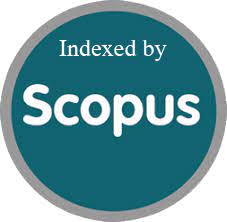Early outcome analysis of Gastroschisis from a high-volume tertiary care institute in India: A prospective observational study
DOI:
https://doi.org/10.52783/jns.v12.1197Keywords:
Abdominal wall defect, Malformations, Neonates, MortalityAbstract
Background: Gastroschisis is one of the common congenital anterior abdominal wall defects with uncovered abdominal contents (usually intestines) protruding through it. Immediate reduction of the abdominal contents is crucial after birth because of the grave consequences of delayed management. The aim of our study was to evaluate the early outcomes of Gastroschisis at a tertiary care institute in India.
Methods: This prospective observational study was undertaken over a one-year duration extending from January to December 2021 at our pediatric tertiary care teaching institute.
Results: There were 30 male and 28 female patients, out of which 37 were preterm neonates. The mean birth weight was 2019?357g. Seven patients (12.07%) had major associated malformations. Fifty (86.21%) patients underwent primary skin flap closure. Staged reduction with silo was accomplished in five (8.62%) patients; three patients died during resuscitation before any therapeutic procedure could be undertaken. Among 55 (94.83%) patients with surgical procedures, only 26 (47.27%) could be salvaged with overall favorable (survival) outcomes in 44.83% of patients. Mortality was high (92.59%, 25/27) in the patients presenting with markedly edematous bowel with leathery peel.? Seventeen (29.31%, 17/58) neonates died in the first 72 hours (postoperatively) due to complications of abdominal compartment syndrome, eight (13.79%) patients died due to postoperative sepsis with thrombocytopenia, and two (3.44%) had intestinal perforation. The duration of hospital stay in neonates who survived ranged from one to four weeks.
Conclusion: Overall survival rates in our study were 44.83% markedly in contrast to the series published in the recent literature. The outcome of preterm (premature) patients, associated intestinal atresia, presence of edematous bowel with leathery peel, patients requiring silo due to viscero-abdominal disproportion, necrotizing enterocolitis, and associated malformations, was dismal.
Downloads
Metrics
References
Erdogan D, Azili MN, ?avusoglu YH, Tuncer IS, Karaman I, Karaman A, et al. 11-year experience with gastroschisis: factors affecting mortality and morbidity. Iran J Pediatr. 2012; 22:339-43.
Snyder CL. Outcome analysis for gastroschisis. J Pediatr Surg. 1999; 34:1253-6. Available from: https://doi.org/10.1016/s0022-3468(99)90162-8.
Blakelock RT, Harding JE, Kolbe A, Pease PW. Gastroschisis: can the morbidity be avoided? Pediatr Surg Int. 1997; 12:276-82. Available from: https://doi.org/10.1007/BF01372149.
Boia ES, Iacob R, Adam O, Pavel AI, Trailescu MD, Boia M, et al. Surgical treatment of gastroschisis using silimed gastroschisis container-case report. Jurnalul Pediatrului. 2006; 19:39-45.
Blane CE, Wesley JR, DiPietro MA, White SJ, Coran AG. Gastrointestinal complications of gastroschisis. AJR Am J Roentgenol. 1985; 144:589-91. Available from: https://doi.org/10.2214/ajr.144.3.589.
Abdel?Latif ME, Bolistty S, Abeywardana S, Lui K. Mode of delivery and neonatal survival of infants with gastroschisis in Australia and New Zealand. J Pediatr Surg. 2008; 43:1685-90. Available from: https://doi.org/10.1016/j.jpedsurg.2008.03.053.
Owen A, Marven S, Johnson P, Kurinczuk J, Spark P, Draper ES, et al. Gastroschisis: a national cohort study to describe contemporary surgical strategies and outcomes. J Pediatr Surg. 2010; 45:1808-16. Available from: https://doi.org/10.1016/j.jpedsurg.2010.01.036.
Bianchi A, Dickson AP, Alizai NK. Elective delayed midgut reduction?no anesthesia for gastroschisis: selection and conversion criteria. J Pediatr Surg. 2002; 37:1334-6. Available from: https://doi.org/10.1053/jpsu.2002.35003.
Luton D, de Lagausie P, Guibourdenche J, Oury J, Sibony O, Vuillard E, et al. Effect of amnioinfusion on the outcome of prenatally diagnosed gastroschisis. Fetal Diagn Ther. 1999; 14:152-5. Available from: https://doi.org/10.1159/000020910.
Komuro H, Imaizumi S, Hirata A, Matsumoto M. Staged silo repair of gastroschisis with preservation of the umbilical cord. J Pediatr Surg. 1998; 33:485-8. Available from: https://doi.org/10.1016/s0022-3468(98)90093-8.
Lausman AY, Langer JC, Tai M, Seaward PG, Windrim RC, Kelly EN, et al. Gastroschisis: what is the average gestational age of spontaneous delivery? J Pediatr Surg. 2007; 42:1816-21. Available from: https://doi.org/10.1016/j.jpedsurg.2007.07.005.
Williams T, Butler R, Sundem T. Management of the Infant with gastroschisis: A comprehensive review of the literature. Newborn and Infant Nursing Reviews. 2003; 3:55-63.
Overton TG, Pierce MR, Gao H, Kurinczuk JJ, Spark P, Draper ES, et al. Antenatal management and outcomes of gastroschisis in the U.K. Prenat Diagn. 2012; 32:1256-62. Available from: https://doi.org/10.1002/pd.3998.
Curry JI, McKinney P, Thornton JG, Stringer MD. The aetiology of gastroschisis. BJOG. 2000; 107:1339-46. Available from: https://doi.org/10.1111/j.1471-0528.2000.tb11645.x.
Lawson A, de la Hunt MN. Gastroschisis and undescended testis. J Pediatr Surg. 2001; 36:366-7. Available from: https://doi.org/10.1053/jpsu.2001.20718.
Langer JC. Gastroschisis and omphalocele. Semin Pediatr Surg. 1996; 5:124-8.
Askarpour S, Ostadian N, Javaherizadeh H, Chabi S. Omphalocele, gastroschisis: epidemiology, survival, and mortality in Imam Khomeini hospital, Ahvaz-Iran. Pol Przegl Chir. 2012; 84:82-5. Available from: https://doi.org/10.2478/v10035-012-0013-4.
Cusick E, Spicer RD, Beck JM. Small-bowel continuity: A crucial factor in determining survival in gastroschisis. Pediatr Surg Int. 1997; 12:34-7. Available from: https://doi.org/10.1007/BF01194799.

Published
How to Cite
Issue
Section
License
Copyright (c) 2023 Rahul Gupta, Bhairu Lal Gurjar

This work is licensed under a Creative Commons Attribution 4.0 International License.
You are free to:
- Share — copy and redistribute the material in any medium or format
- Adapt — remix, transform, and build upon the material for any purpose, even commercially.
Terms:
- Attribution — You must give appropriate credit, provide a link to the license, and indicate if changes were made. You may do so in any reasonable manner, but not in any way that suggests the licensor endorses you or your use.
- No additional restrictions — You may not apply legal terms or technological measures that legally restrict others from doing anything the license permits.










